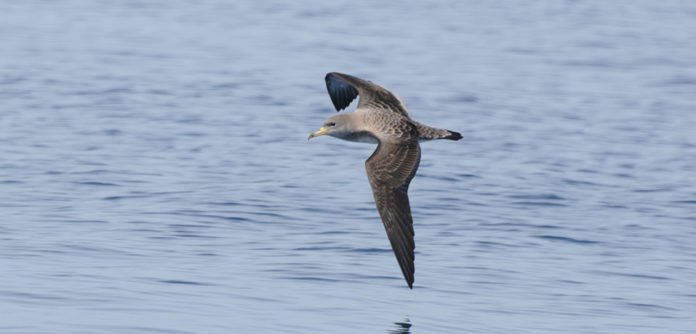How do birds navigate over long distances? This question is the topic of interest for various scientists since decades.
Now, researchers from the Universities of Oxford, Barcelona, and Pisa have found the answer. They have shown that olfaction or sense of smell is certainly a key factor in long-distance oceanic navigation.
Study leader Oliver Padget, said, “Navigation over the ocean is probably the extreme challenge for birds, given the long distances covered, the changing environment, and the lack of stable landmarks.”
Many previous experiments only focused on the physical displacement of birds. They only combined some form of sensory manipulation such as magnetic or olfactory deprivation. The results show that removing a bird’s sense of smell impairs homing. On the other hand, disruption of the magnetic sense has yielded inconclusive results.
Padget said, “However, critics have questioned whether birds would behave in the same way had they not been artificially displaced, as well as arguing that rather than affecting a bird’s ability to navigate, sensory deprivation may, in fact, impair a related function, such as its motivation to return home or its ability to forage.”
“Our new study eliminates these objections, meaning it will be very difficult in future to argue that olfaction is not involved in long-distance oceanic navigation in birds.”
In this new study, scientists focused on movements and behavior of 32 free-ranging Scopoli’s shearwaters off the coast of Menorca. They characterized into three groups.
One made temporarily anosmic (unable to smell) through nasal irrigation with zinc sulfate; another carrying small magnets; and a control group.
Scientists even attached Miniature GPS loggers to the birds as they nested and incubated eggs in crevices and caves on the rocky Menorcan coast. But instead of being displaced, they were then tracked as they engaged in natural foraging trips.
Scientists noted, “When birds were roaming, they gained weight and returned to exchange incubation periods with their partners. Means, removing a bird’s sense of smell does not appear to impair either its motivation to return home or its ability to forage effectively.”
The anosmic birds made successful trips to the Catalan coast. Other were found at distant foraging grounds. They showed almost distinct orientation behavior from the controls during the at-sea stage of their return journeys.
Rather than being very much situated towards home when they were beyond anyone’s ability to see of land, they set out on inquisitively straight yet ineffectively arranged flights over the sea, as though following a compass bearing far from the rummaging grounds without having the capacity to refresh their position.
Their introduction at that point enhanced when moving toward arriving, proposing that winged creatures must counsel an olfactory guide when outside of anyone’s ability to see of land yet are in this way ready to discover home utilizing well-known scene highlights.
Senior author Tim Guilford, said, “To the best of our knowledge, this is the first study that follows free-ranging foraging trips in sensory manipulated birds. The displacement experiment has rightly been at the heart of bird navigation studies and has produced powerful findings on what birds are able to do in the absence of information collected on their outward journey.”
“But by its nature, the displacement experiment cannot tell us what birds would do if they had the option of using outward-journey information, as they did in our study. This heralds a whole new era of work in which careful track analysis of free-ranging movements, with and without experimental interventions, can provide inferences about the underlying behavioral mechanisms of navigation.”
“Precision onboard tracking technology and new analytical methods, too computationally heavy to have been possible in the past, have made this feasible.”
